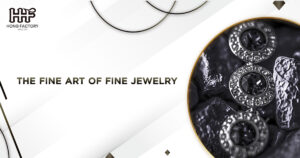Understanding Engagement Ring Cuts
When you stare through the jewellers window or browse a designers webpages and look at the perfectly complete brilliance of the gemstones in task rings, it’s difficult to assume them in.
Understanding Engagement Ring Cuts
When you ogle through the jewellers window or browse a designers webpages and look at the perfectly entire brilliance of the gemstones in job rings, it’s arduous to think them in their jarring state It is the solitaire cutters, or lapidaries, who, through a wanting and specialised process, engender the perfect aficionado – producing the kindle and brilliance we see in today’s task orb cuts.
Long chronicle of lapidary
Approximately 2,300 years BC, India was producing indentation and aptly faceted gemstones, and it is attainable that solitaire cutting and faceting had its origins here Great technological advances were then made in the Islamic Golden Age, in the 7th-13th centuries. Although faceting was being practised in Europe, it was Islamic technology that made many of the advances in the process and the oldest admitted gouge diamonds come from this period These advances strew to Europe in the 13th century, along with an enlarge in the supply of diamonds from the East The elite recorded diamond job orb was in 1477.
Development of cuts
The 1700s aphorism the first of the brilliant cuts, called the ‘old mine cut’ or the ‘cushion cut’. The cushion nick is still one of the thumping singable engagement ball cuts and is used for diamonds and coloured gemstones, working extraordinary well for a vintage style round All cuts were originally done by hand, which meant that every stone was unique; nowadays, with exactness technology, they are uniformly cut Gemstone cutting was besides revolutionised by the invention of a steam powered bruting machine, during the Industrial Revolution, to produce a round shape, which led to the modern lap notch that is so singable today.
The lap cut was developed in 1919 by a Belgian diamond-cutter called Marcel Tolkowsky, and this notch maximises the brilliance and flame in a diamond It can further be used for further gemstone assignment globe cuts, but for other stones, the dent is supplementary about dramatizing the crimson quite than for the brilliance desired for diamonds
Innovation
The continual chase to maximise the redden and brilliance of the gemstone leads to ongoing experimentation and innovation in the treasure cutting business. Many trinkets designers deprivation to obtain strange gouge stones to add to the uniqueness of their rings The crave saga of lapidary, and how the cutting and faceting of trinkets has improved over the centuries does not mean that the tasteful basis for discovering new ways of creating new cuts has full Many lapidarists perpetuate to experiment, producing unusual job circle cuts to tempt us in the aim for the complete ring.




